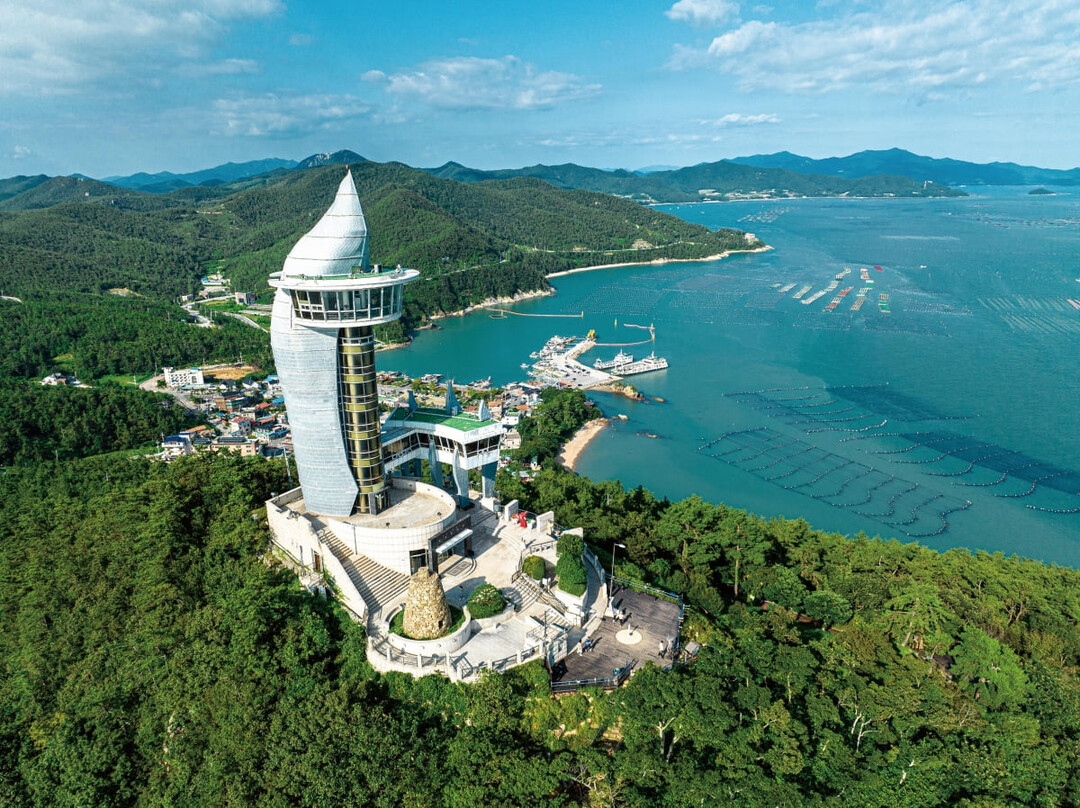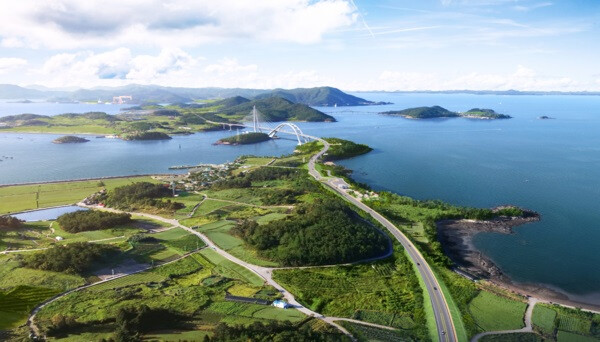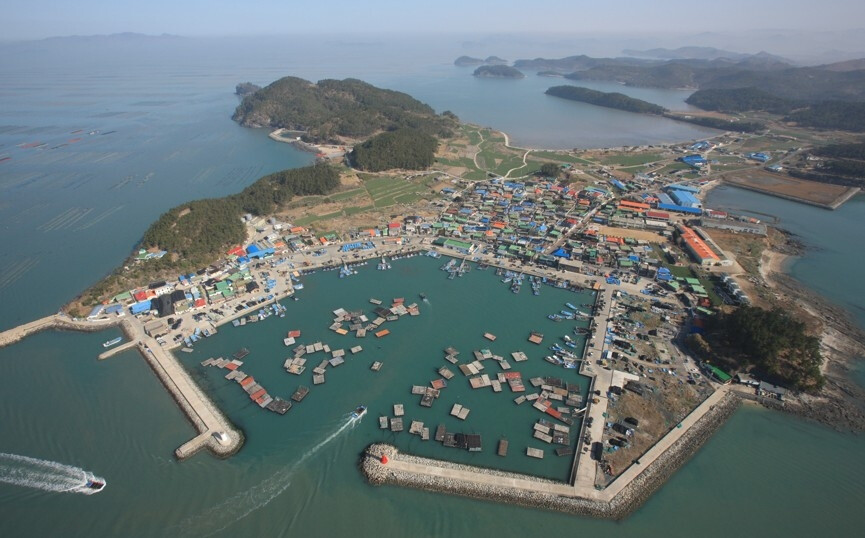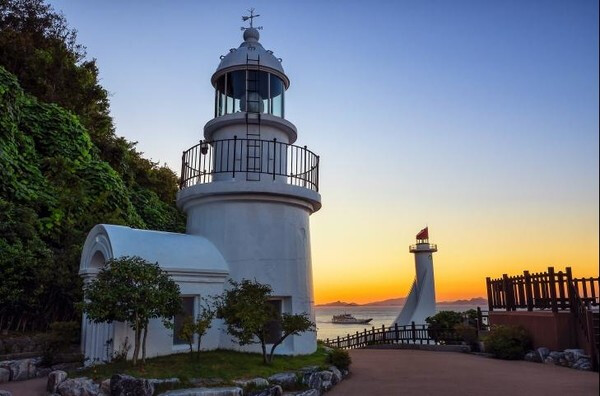
Haenam, South Korea – As the southernmost tip of the Korean Peninsula, Haenam (해남) is a region rich in natural beauty, history, and symbolism. The journey here is often described as standing at the "land’s end" (땅끝), a dramatic vantage point where the mountains meet the sea, inspiring the thought of a new beginning. It’s a place where both mind and body feel enriched.
A Glimpse of History and Art at Gosan's Estate
A significant stop on any Haenam itinerary is the Gosan Yun Seondo Historic Site, officially known as the Nokwudang Estate of the Haenam Yun Clan. Although the estate’s main house, Nokwudang, was moved here after the poet Gosan Yun Seondo's time, the area is an important cultural space showcasing the life and culture of a noble family during the Joseon dynasty.
Before entering the estate, visitors should first explore the Gosan Yun Seondo Museum. It houses textbook-worthy treasures, including the poet's famous works like Eobusasisa (Fisherman's Sijo) and Sanjungsingok (New Songs in the Mountains), and the masterpiece, Gongjae Yun Duseo’s Self-Portrait. The museum offers a window into the family's history and the social landscape of the time.
The serene walk continues through a peaceful path along the walls of the ancestral home, leading to a fragrant nutmeg tree forest. The recently established 'Ouga Garden,' dedicated to one of Gosan’s famous poems, offers a perfect spot for quiet contemplation.
Near the historic site is the Ttangkkeut Pilgrimage Literature Center, which celebrates Haenam’s literary tradition, featuring local writers like Kim Nam-ju and Go Jeong-hui. Notably, the 2025 Jeollanamdo International Ink Art Biennale will feature exhibitions here and at the Gosan Museum, providing a rare opportunity to see authentic works, including a 321-year-old original of Yun Duseo's Sema-do (Horse Painting).

The Sanctity of Daeheungsa Temple
Daeheungsa Temple is not only Haenam’s main temple but also one of the seven UNESCO World Heritage sites known as the "Mountain Monasteries of Korea." Nestled within the gently sloping yet deep Duryunsan Mountain, Daeheungsa was once a significant center for Buddhist practice, scholarship, and, notably, tea culture.
The temple complex is famed for its unique spatial layout and for having calligraphic plaques penned by renowned historical figures like King Jeongjo and Kim Jeong-hui (Chusa). It is revered by tea enthusiasts as the 'Holy Land of Tea,' thanks to Cho-ui Seonsa (1786–1866), the 'Sage of Tea,' who cultivated new tea varieties while residing in the adjacent Ilji-am hermitage.
Just outside the temple is Yuseongwan, considered Korea’s first inn. Recently renovated, this 100-year-old hanok (traditional Korean house) now offers modern amenities while maintaining its historical charm, making it a perfect retreat for travelers.

Thrills and Scenery on the Dalmagodo Trail
The rugged Dalmaksan Mountain forms a dramatic backdrop to the region. The Dalmagodo is a 17.74km circular hiking trail that traces the main ridge of Dalmaksan, beginning and ending at Mihwangsa Temple.
The highlight of the trail is arguably Dosol-am Hermitage, which is widely hailed as Haenam's No. 1 Scenic View. Perched precariously on a rocky ledge mid-slope, the tiny hermitage offers a breathtaking, unobstructed panorama of the southern Haenam area, Ttangkkeut Village, and the sparkling Dadohae Archipelago. Visitors can drive to a nearby parking lot and walk a short 700 meters on an improved forest road to reach this spectacular spot.

A Taste of Tradition: Haechang Brewery
A mandatory stop is the Haechang Brewery (Haechang Jujo), a local institution recognized as one of the "50 Breweries to Visit in Korea." The brewery's building is a preserved 1927 Japanese-era house, featuring a picturesque garden with a 600-year-old crape myrtle tree.
Haechang Makgeolli (Korean rice wine) is made simply and honestly with a 50/50 blend of new rice and sticky rice, along with nuruk (fermentation starter) and water, with no added sweeteners. The resulting flavor is rich and savory, growing heavier with the higher-proof varieties (9, 12, 15, and 18 proof).
The Symbolic Land’s End
Ttangkkeut Maeul (Land's End Village), also called Galdu or Tomal, is not the end, but a beginning. From Galdu Port, you can start a new island-hopping journey.
The Ttangkkeut Observatory, shaped like a nine-story torch, stands at the peak of Galdu Mountain, symbolizing hope and reunification. From the top, a dramatic 180-degree view showcases Galdu Port, the countless scattered islands, and the vast blue sea.
A highly recommended route is taking the monorail up to the observatory, then descending and walking the newly installed Ttangkkeut Dream Trail (Ttangkkeut Kkumgilland), a 900-meter barrier-free deck path that takes about 15-20 minutes. It leads directly to the Ttangkkeut Tower, the symbolic icon marking the absolute southernmost point of the Korean Peninsula (34° 17' N).
New additions include a Skywalk installed in front of the tower—an 18-meter-high, 41-meter-long transparent glass bridge that provides both thrilling views and a unique photo opportunity.
The Flavors of Haenam
A trip to Haenam is incomplete without sampling its rich cuisine, known as the Haenam Nine Delicacies: including tteokgalbi (grilled short-rib patties), chicken course meals, borissambap (barley rice wraps), and sweet potato bread.
The renowned Cheon-il Sikdang offers a generous tteokgalbi set meal, even for single diners, serving the entire table on a hand-carried tray in a traditional hanok room. The smoky, delightful tteokgalbi is a perfect, satisfying end to a long day of travel.
As the season shifts, Haenam anticipates upcoming events like the Myeongnyang Naval Battle Festival and the Haenam Minam (Delicious South) Festival, promising more reasons to visit this endlessly enriching corner of Korea.
[Copyright (c) Global Economic Times. All Rights Reserved.]




























